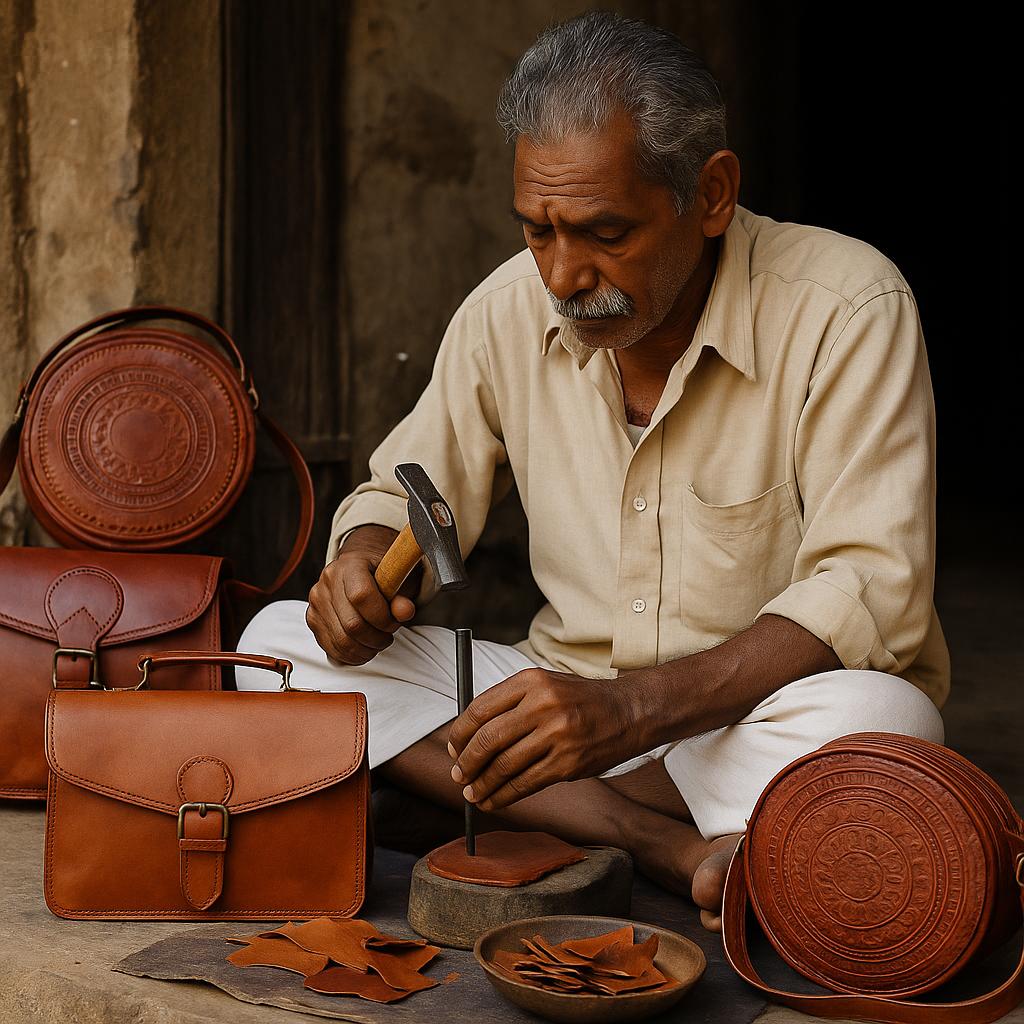
The History of Leather Craft in India: A Journey Through Time
India’s connection to leather craft is deeply rooted in its cultural, social, and economic fabric. For centuries, skilled artisans have molded leather into practical and artistic pieces that reflect tradition, resilience, and craftsmanship. Today, as leather bags and accessories gain popularity worldwide, it's worth looking back at how this heritage began—and why it still matters.
Ancient Beginnings: Leather in Early India
The use of leather in India dates back to the Indus Valley Civilization (around 3000 BCE), where evidence of animal hide usage for clothing, footwear, and tools has been found. Leather was valued not just for its durability, but also for its adaptability in daily life.
Texts from the Vedic period (1500–500 BCE) mention leather in the context of musical instruments (like the tabla and dholak) and attire. Leather craft was both a practical necessity and a symbol of social function.
The Role of Traditional Communities
Historically, leather work in India has been closely associated with certain communities—especially the Dalits, who despite facing social exclusion, preserved and perfected the art over generations.
These artisans mastered the process of tanning, dyeing, cutting, and stitching leather by hand, often without formal education but with skills passed down from parent to child. Every village had its cobblers and leather workers—crafting shoes (mojdis), belts, bags, and saddles.
Medieval India: The Royal Touch
During the Mughal era, leather craftsmanship received royal patronage. Luxurious leather items—such as embroidered pouches, saddles for horses, and book covers—were created with intricate detailing and hand painting. Mughal influence brought a fusion of Persian artistry and Indian tradition, which can still be seen in some regional crafts.
Colonial Period: Industry Meets Tradition
Under British rule, leather production in India shifted from a cottage industry to a more industrialized process. The British relied heavily on Indian leather for military boots, belts, and saddlery. This increased demand pushed production but also caused a decline in handmade craftsmanship, as machine-made products took center stage.
However, some regions retained their identity as hubs for hand-crafted leather goods. Notably:
- Kanpur became known as the "Leather City of the World."
- Chennai (then Madras) emerged as a center for tanneries.
- Kolhapur, in Maharashtra, became famous for its Kolhapuri chappals—still beloved today.
Post-Independence Revival
After India gained independence, there was a renewed interest in protecting and promoting traditional crafts, including leather work. The government and NGOs began encouraging artisanal cooperatives, helping small-scale leather workers compete with mass production.
Efforts were made to:
- Improve working conditions.
- Introduce eco-friendly tanning methods.
- Provide training and marketing support for rural artisans.
Modern Era: Leather as a Lifestyle Statement
In the 21st century, Indian leather has gained global recognition. Handcrafted bags, wallets, belts, and footwear made by rural artisans are now sold in premium outlets and online platforms across the world.
Brands like Promise Bags are helping revive this ancient craft by:
- Empowering women from rural and underprivileged backgrounds.
- Promoting ethical and sustainable production.
- Blending traditional methods with contemporary designs.
The focus has shifted from mere utility to lifestyle, fashion, and impact—a powerful combination that connects the past with the future.
Why It Matters Today
The story of leather craft in India isn’t just about bags or shoes. It’s about people—the invisible hands that have kept this tradition alive despite poverty, discrimination, and modernization.
By choosing Promise Bags handmade leather products, you:
- Support artisan livelihoods.
- Preserve centuries-old heritage.
- Promote sustainable and ethical fashion.
Leather craft in India is a living legacy. From ancient villages to modern studios, it carries the resilience, creativity, and hope of generations. At Promise Bags, we are proud to be a part of this tradition—honoring the hands that stitch not just leather, but stories of transformation.


